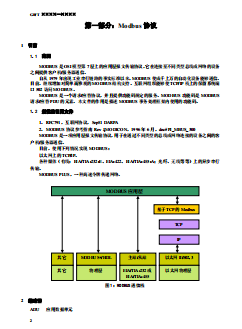就像我写的其他书一样,这本书没有固定的范围。我不是从索引开始的。我没有写每一章的摘要来定义范围。我不做这种事。只有一个高层次的目标是探索Kubernetes集群内部的持续交付和部署。不过,我做的是制定一些指导方针。第一条准则是所有的例子都将在所有主要的Kubernetes平台上进行测试。嗯,那可能有点牵强。我知道任何提到“all”和“Kubernetes”的句子都是不正确的。雨后新的平台如雨后春笋般冒出来。不过,我当然可以选择一些最常用的。Minikube和Docker for Mac或Windows无疑应该为那些喜欢在本地“玩”Docker的人提供。AWS是最大的主机提供商,因此Kubernetes操作(kops)也必须包括在内。因为只覆盖非托管云是愚蠢的,所以我还必须包括托管Kubernetes集群。谷歌Kubernetes引擎(GKE)是显而易见的选择。它是最稳定、功能最丰富的托管Kubernetes解决方案。将GKE添加到组合中意味着Azure容器服务(AKS)和Amazon的弹性容器服务(EKS)也应该包括在内,这样我们就可以拥有提供托管Kubernetes的托管供应商的“三巨头”。不幸的是,尽管AKS是可用的,但目前(2018年6月),它仍然太不稳定,缺少很多功能。所以,我不得不从三人组缩小到GKE和EKS二人组,作为我们将要探讨的管理型Kubernetes的代表。最后,还应包括可能的预处理解决方案。由于OpenShift在这一领域大放异彩,所以选择相对容易。总之,我决定在本地测试minikube和Docker for Mac的所有内容,AWS以kops作为云中集群的代表,GKE用于托管Kubernetes集群,OpenShift(带有minishift)作为潜在的on prem解决方案。这本身就已经构成了一个真正的挑战,可能被证明是我无法承受的。尽管如此,确保所有示例都能与所有这些平台和解决方案配合使用,应该会提供一些有用的见解。你们中的一些人已经选择了Kubernetes的口味。其他人可能仍然想知道是采用一种还是另一种。尽管比较不同的Kubernetes平台并不是本书的主要内容,但我会尽我所能解释它们之间的差异。为了总结这些指导原则,本文探讨了使用Jenkins在Kubernetes中进行连续交付和部署。所有示例都在minikube、Docker for Mac(或Windows)、AWS with kops、GKE、OpenShift with minishift和EKS中进行了测试。
英文介绍
Just like the other books I wrote, this one does not have a fixed scope. I did not start with an index. I didn't write a summary of each chapter in an attempt to define the scope. I do not do such things. There is only a high-level goal to explore continuous delivery and deployment inside Kubernetes clusters. What I did do, though, was to set a few guidelines. The first guideline is that all the examples will be tested on all major Kubernetes platforms. Well, that might be a bit far-fetched. I'm aware that any sentence that mentions "all" together with "Kubernetes" is bound to be incorrect. New platforms are popping out like mushrooms after rain. Still, what I can certainly do is to choose a few of the most commonly used ones. Minikube and Docker for Mac or Windows should undoubtedly be there for those who prefer to "play" with Docker locally. AWS is the biggest hosting provider so Kubernetes Operations (kops) must be included as well. Since it would be silly to cover only un-managed cloud, I had to include managed Kubernetes clusters as well. Google Kubernetes Engine (GKE) is the obvious choice. It is the most stable and features rich managed Kubernetes solution. Adding GKE to the mix means that Azure Container Service (AKS) and Amazon's Elastic Container Service (EKS) should be included as well so that we can have the "big trio" of the hosting vendors that offer managed Kubernetes. Unfortunately, even though AKS is available, it is, at this moment (June 2018), still too unstable and it's missing a lot of features. So, I'm forced to scale down from the trio to the GKE and EKS duo as representatives of managed Kubernetes we'll explore. Finally, a possible on-prem solution should be included as well. Since OpenShift shines in that area, the choice was relatively easy. All in all, I decided to test everything in minikube and Docker for Mac locally, AWS with kops as the representative of a cluster in the cloud, GKE for managed Kubernetes clusters, and OpenShift (with minishift) as a potential on-prem solution. That, in itself, already constitutes a real challenge that might prove to be more than I can chew. Still, making sure that all the examples work with all those platforms and solutions should provide some useful insights. Some of you already chose the Kubernetes flavor you'll use. Others might still wonder whether to adopt one or the other. Even though the comparison of different Kubernetes platforms is not the primary scope of the book, I'll do my best to explain the differences as they come. To summarize the guidelines, it explores continuous delivery and deployment in Kubernetes using Jenkins. All the examples are tested in minikube, Docker for Mac (or Windows), AWS with kops, GKE, OpenShift with minishift, and EKS.




















